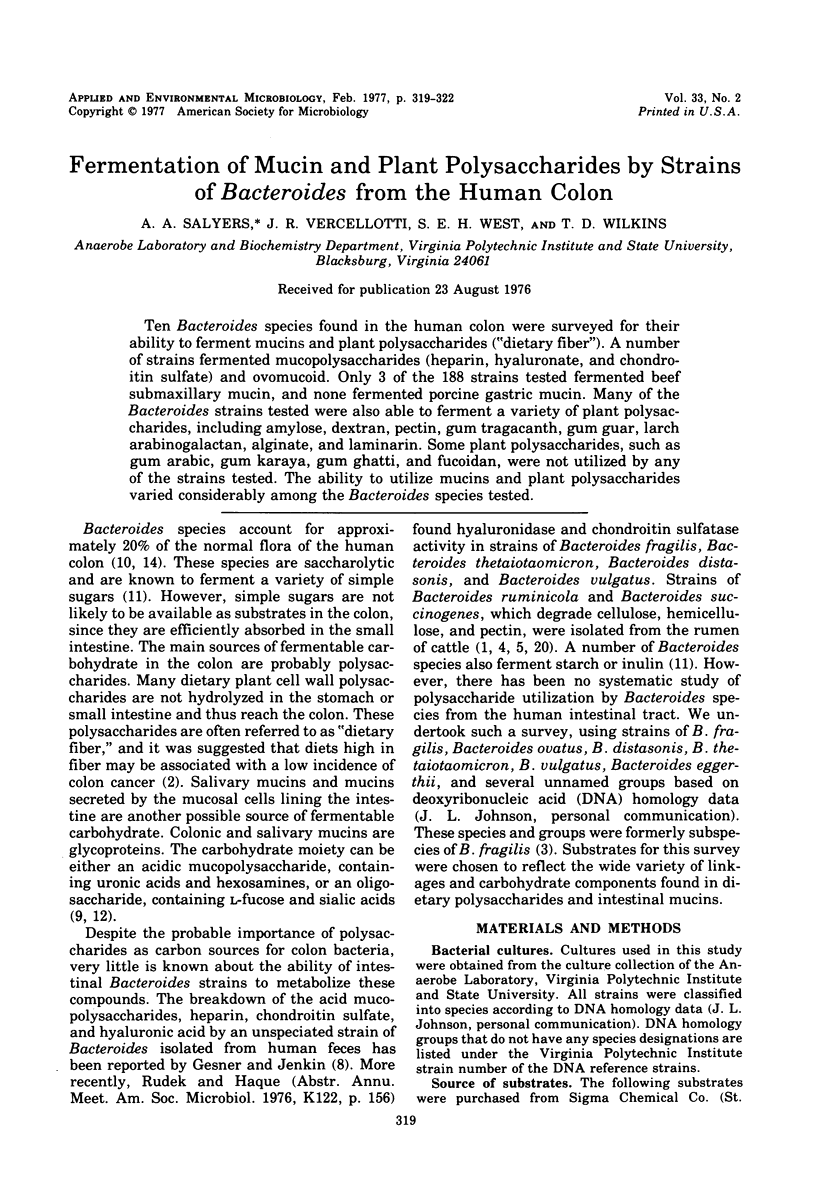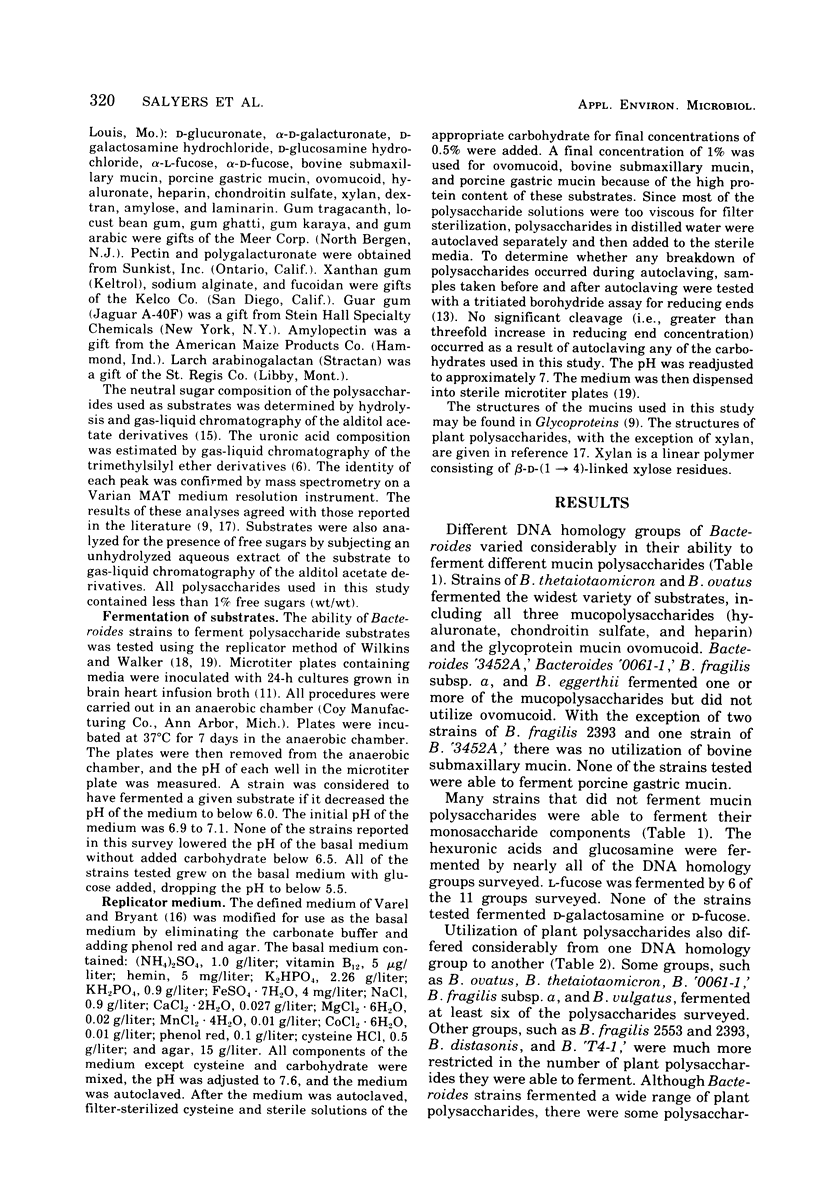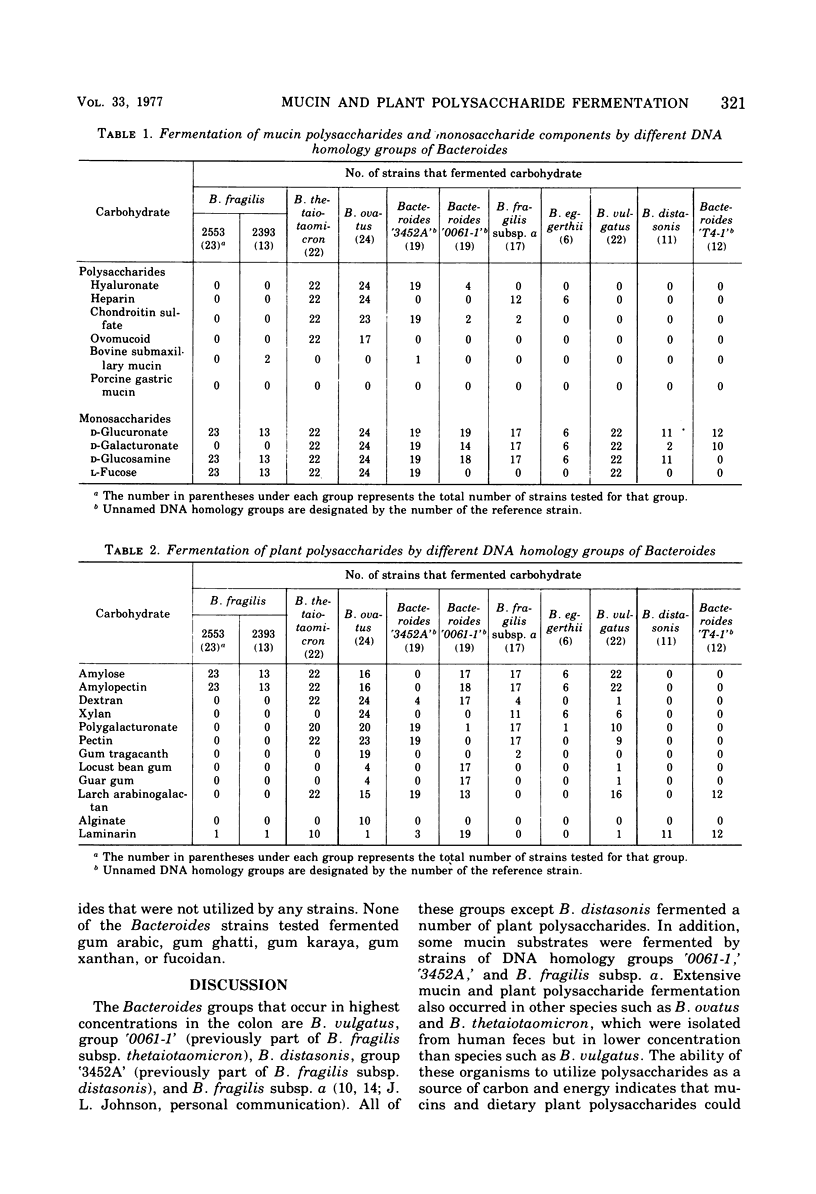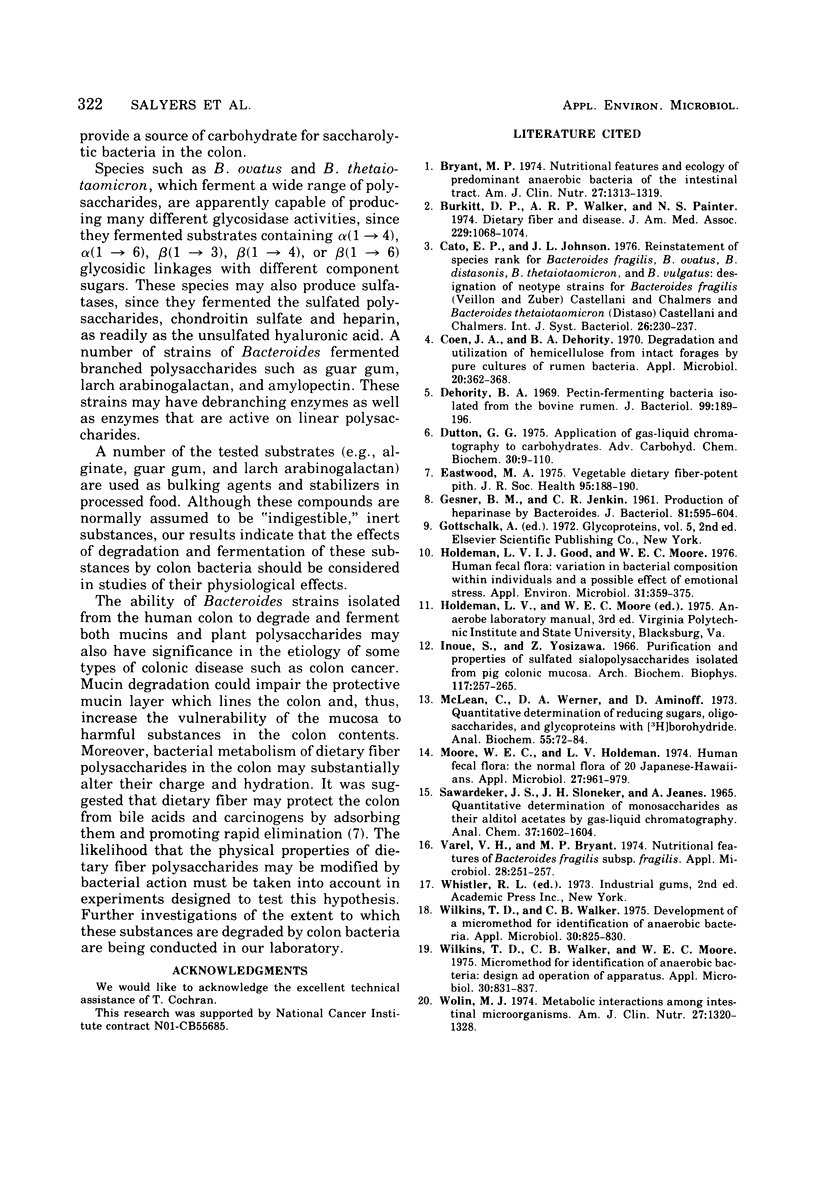Abstract
Ten Bacteroides species found in the human colon were surveyed for their ability to ferment mucins and plant polysaccharides ("dietary fiber"). A number of strains fermented mucopolysaccharides (heparin, hyaluronate, and chondroitin sulfate) and ovomucoid. Only 3 of the 188 strains tested fermented beef submaxillary mucin, and none fermented porcine gastric mucin. Many of the Bacteroides strains tested were also able to ferment a variety of plant polysaccharides, including amylose, dextran, pectin, gum tragacanth, gum guar, larch arabinogalactan, alginate, and laminarin. Some plant polysaccharides such as gum arabic, gum karaya, gum ghatti and fucoidan, were not utilized by any of the strains tested. The ability to utilize mucins and plant polysaccharides varied considerably among the Bacteroides species tested.
Full text
PDF



Selected References
These references are in PubMed. This may not be the complete list of references from this article.
- Bryant M. P. Nutritional features and ecology of predominant anaerobic bacteria of the intestinal tract. Am J Clin Nutr. 1974 Nov;27(11):1313–1319. doi: 10.1093/ajcn/27.11.1313. [DOI] [PubMed] [Google Scholar]
- Burkitt D. P., Walker A. R., Painter N. S. Dietary fiber and disease. JAMA. 1974 Aug 19;229(8):1068–1074. [PubMed] [Google Scholar]
- Coen J. A., Dehority B. A. Degradation and utilization of hemicellulose from intact forages by pure cultures of rumen bacteria. Appl Microbiol. 1970 Sep;20(3):362–368. doi: 10.1128/am.20.3.362-368.1970. [DOI] [PMC free article] [PubMed] [Google Scholar]
- Dehority B. A. Pectin-fermenting bacteria isolated from the bovine rumen. J Bacteriol. 1969 Jul;99(1):189–196. doi: 10.1128/jb.99.1.189-196.1969. [DOI] [PMC free article] [PubMed] [Google Scholar]
- GESNER B. M., JENKIN C. R. Production of heparinase by Bacteroides. J Bacteriol. 1961 Apr;81:595–604. doi: 10.1128/jb.81.4.595-604.1961. [DOI] [PMC free article] [PubMed] [Google Scholar]
- Holdeman L. V., Good I. J., Moore W. E. Human fecal flora: variation in bacterial composition within individuals and a possible effect of emotional stress. Appl Environ Microbiol. 1976 Mar;31(3):359–375. doi: 10.1128/aem.31.3.359-375.1976. [DOI] [PMC free article] [PubMed] [Google Scholar]
- Inoue S., Yosizawa Z. Purification and properties of sulfated sialopolysaccharides isolated from pig colonic mucosa. Arch Biochem Biophys. 1966 Nov;117(2):257–265. doi: 10.1016/0003-9861(66)90410-3. [DOI] [PubMed] [Google Scholar]
- McLean C., Werner D. A., Aminoff D. Quantitative determination of reducing sugars, oligosaccharides, and glycoproteins with (3H)borohydride. Anal Biochem. 1973 Sep;55(1):72–84. doi: 10.1016/0003-2697(73)90291-1. [DOI] [PubMed] [Google Scholar]
- Moore W. E., Holdeman L. V. Human fecal flora: the normal flora of 20 Japanese-Hawaiians. Appl Microbiol. 1974 May;27(5):961–979. doi: 10.1128/am.27.5.961-979.1974. [DOI] [PMC free article] [PubMed] [Google Scholar]
- Varel V. H., Bryant M. P. Nutritional features of Bacteroides fragilis subsp. fragilis. Appl Microbiol. 1974 Aug;28(2):251–257. doi: 10.1128/am.28.2.251-257.1974. [DOI] [PMC free article] [PubMed] [Google Scholar]
- Wilkins T. D., Walker C. B. Development of a micromethod for identification of anaerobic bacteria. Appl Microbiol. 1975 Nov;30(5):825–830. doi: 10.1128/am.30.5.825-830.1975. [DOI] [PMC free article] [PubMed] [Google Scholar]
- Wilkins T. D., Walker C. B., Moore W. E. Micromethod for identification of anaerobic bacteria: design and operation of apparatus. Appl Microbiol. 1975 Nov;30(5):831–837. doi: 10.1128/am.30.5.831-837.1975. [DOI] [PMC free article] [PubMed] [Google Scholar]
- Wolin M. J. Metabolic interactions among intestinal microorganisms. Am J Clin Nutr. 1974 Nov;27(11):1320–1328. doi: 10.1093/ajcn/27.11.1320. [DOI] [PubMed] [Google Scholar]


